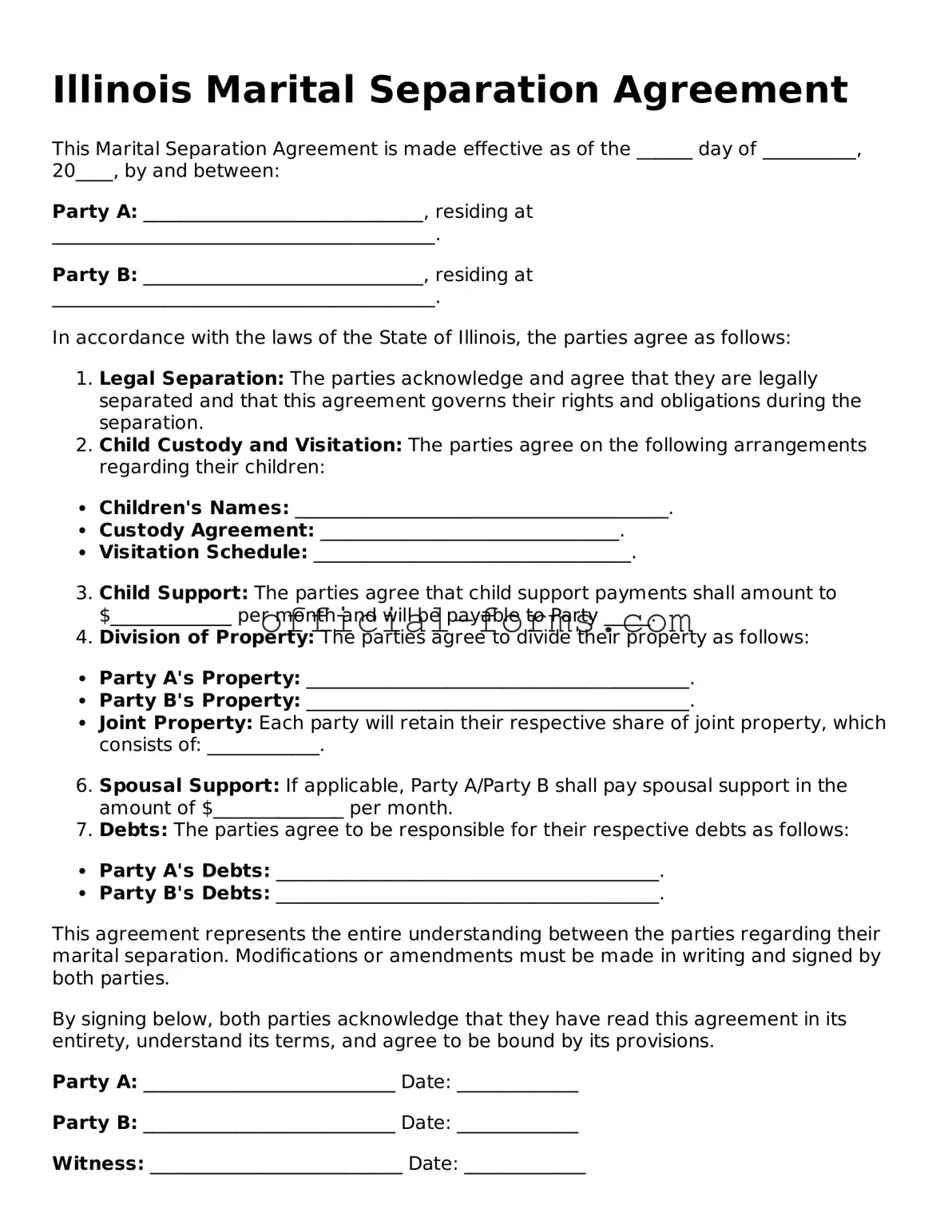Filling out the Illinois Marital Separation Agreement form can be a straightforward process, but many individuals make common mistakes that can lead to complications later on. One frequent error is failing to include all necessary personal information. Each party's full name, address, and contact information should be clearly stated. Omitting this information can create confusion and delay the processing of the agreement.
Another common mistake involves overlooking the importance of clearly defining the terms of the separation. This includes detailing how assets and debts will be divided. Vague language can lead to misunderstandings and disputes in the future. It's crucial to be specific about what each party will receive or be responsible for.
Many people also neglect to address child custody and support arrangements adequately. If children are involved, the agreement must outline custody arrangements and child support obligations. Failing to include this information can result in legal challenges down the line, as courts typically require these issues to be addressed in any separation agreement.
Additionally, some individuals make the mistake of not considering tax implications. For example, the division of assets can affect tax liabilities. Understanding how these decisions will impact finances is essential for both parties. Ignoring tax consequences can lead to unexpected financial burdens after the separation.
Another pitfall is not having the agreement reviewed by a legal professional. While the form may seem straightforward, having a lawyer review the document can help catch errors and ensure that all necessary provisions are included. Skipping this step can lead to problems that might have been easily avoided.
People often forget to sign and date the agreement. Even if the form is filled out correctly, it won't hold up in court without the necessary signatures. Both parties must sign the document, and it’s advisable to have it notarized to add an extra layer of authenticity.
Failing to keep a copy of the signed agreement is another mistake. After everything is finalized, each party should retain a copy for their records. This ensures that both individuals have access to the terms of the agreement and can refer back to it if any disputes arise.
Finally, some individuals rush through the process without fully understanding the terms they are agreeing to. Taking the time to read and comprehend each section of the agreement is vital. Rushing can lead to agreeing to unfavorable terms that may not be in one’s best interest.
